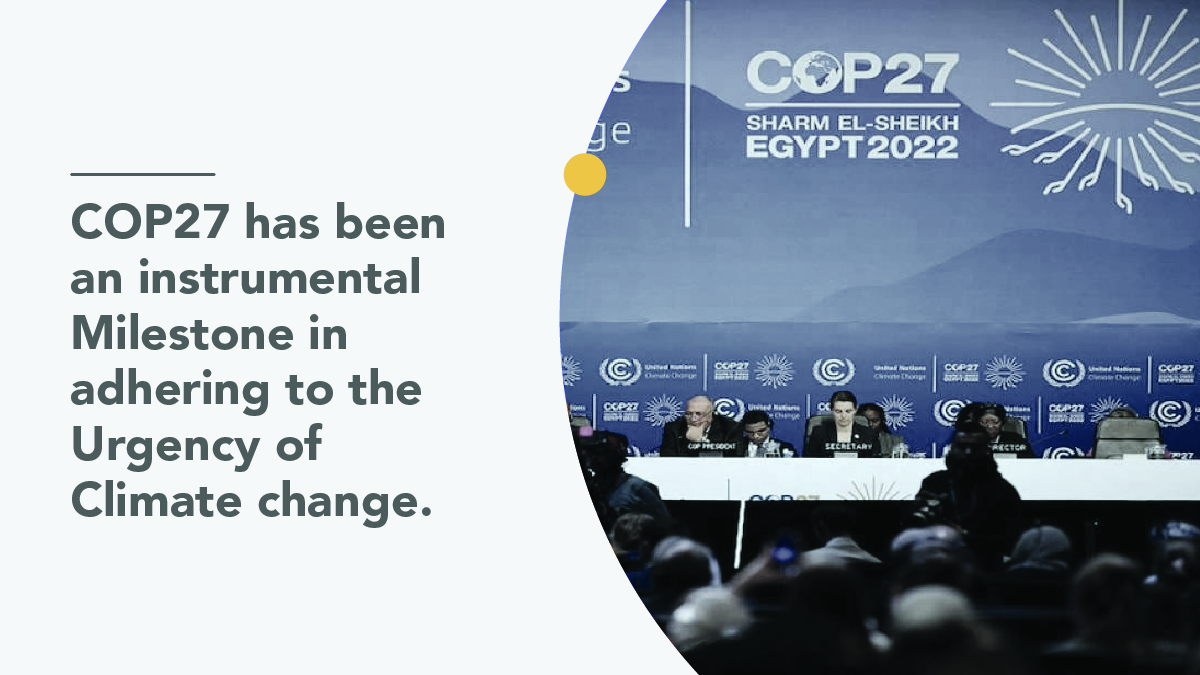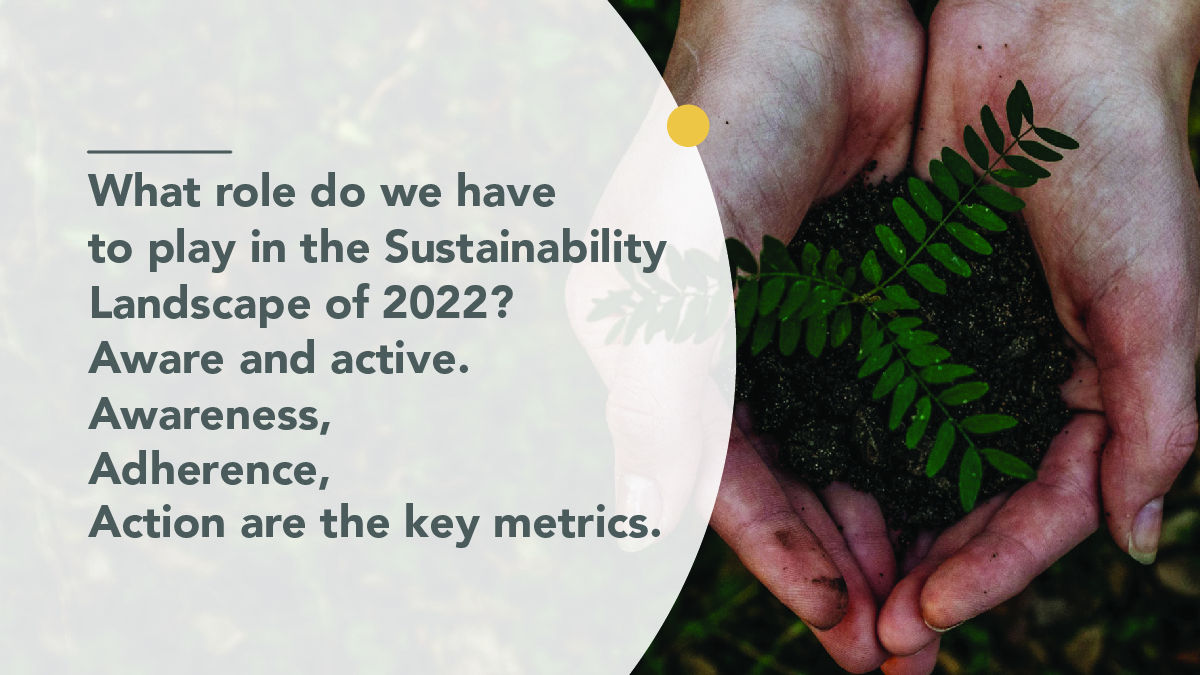The 27th version of UNFCCC’s Conference of Parties was held at the Egyptian Coastal town of Sharm-El-Sheikh from 6th to 20th November. Following COP 26, which reminded the world and reaffirmed the urgent need to combat climate change, COP 27 was supposed to be an implementation COP. In simple words, the likelihood of new pledges being taken up was very less and the focus was to be adjusted towards analyzing the promises that had already been made at COP 26. This turned out to be more or less true. While it had its defining moments, COP 27 left a lot for the future to decide.
COP27 President Sameh Shoukry said: “The work that we’ve managed to do here in the past two weeks, and the results we have together achieved, are a testament to our collective will, as a community of nations, to voice a clear message that rings loudly today, here in this room and around the world: that multilateral diplomacy still works…. despite the difficulties and challenges of our times, the divergence of views, level of ambition or apprehension, we remain committed to the fight against climate change…. we rose to the occasion, upheld our responsibilities and undertook the important decisive political decisions that millions around the world expect from us.”
In the end, two weeks of negotiations, conferences and forums involving more than forty five thousand participants revolved around the world’s climate issues like adaptation, mitigation, climate finance and rise in emissions. We have talked about a few salient features of COP 27 below:
COP 27’s defining moment: Agreement on Loss and Damage Fund
Loss and Damage: COP 27 ended with its biggest highlight (after going into overtime no less), when an agreement was reached amongst the developed nations for providing the developing countries with a fund for loss and damage caused by natural disasters. In order to avoid financial liability, the developed nations, who have been responsible for the majority of the historical emissions, have long avoided the discussions about providing funding to the countries that are now the most vulnerable to the effects of climate change. This has kept the issue of loss and damage funds within a diplomatic gridlock. This long game of cat and mouse finally came to a resolution at COP 27 as the developed nations finally reached a consensus. However, this has opened the floodgates to further questions that went unanswered this time. Discussions regarding the configuration and eligibility of this fund along with who will ultimately finance it are expected to be held at the end of March, 2023.
Further Momentum on Climate Change Adaptation
Climate change Adaptation: COP 27 was also instrumental in pushing the agenda of adaptation to climate change. Adaptation efforts are absolutely essential, especially for the poor countries and island nations that are more susceptible to climate change than the rest of the world. Advancements were made towards the Global Goal on Adaptation, which is an indispensable outcome of 2015’s Paris Agreement. The goal was created for the sole purpose of aiding countries in dealing with the adverse effects of the climate crisis. Further discussions will be undertaken in COP 28 next year.
Moreover, in order to aid susceptible countries in further adapting to climate change, an Adaptation fund was set up which received pledges worth USD 230 million.
Adding to this, COP27 President Sameh Shoukry announced the Sharm el-Sheikh Adaptation Agenda, enhancing resilience for people living in the most climate-vulnerable communities by 2030. A request was also made to the UN Climate Change’s Standing Committee on Finance for doubling the adaptation finance at COP 28.
Issue of Climate Finance reached a boiling point, talks about World Bank Reform
Reforming the World bank: It is evident that the collection and issuance of climate related funds has been unorganized and unevenly distributed so far. Poor developing countries are yet to receive proper funding needed to cut their greenhouse gas emissions. Adding further to the financial concern was the fact that the amount of USD 100 billion per year, which was to be provided by the developed nations to the developing ones by 2020 had still not been achieved yet. The result was serious discussions about the recapitalization of banks which would enable more efficient financial backing towards the developing nations. Furthermore, it was decided that an yearly investment of about USD 4 to 6 trillion in the renewable energy sector until 2030 is of extreme importance in order to stay on track of the 2050 net zero target.
Current Policies Leading us to Doom, Rise in Emissions at an all-time high
Talk about rising emissions: It was evident from the Emission Gap Report published by the UNEP (right before the commencement of COP 27) that the global emissions were nearing an all time high even after reaching a very low point during Covid-19. [Infograph] The results of this report are nothing short of an S.O.S. If we are to achieve the goal of restricting the global temperature rise to not more than 1.5 degree celsius, as discussed in COP 26, we would require the CO2 emissions to fall by around 45-50% by 2030. However, under current governmental policies, the emissions are set to rise by at least 10% by 2030. The only meaning that can be extracted through this grave piece of information is that there is no means of achieving the 1.5 degree goal unless drastic changes are made, globally.
Young People take the stage, demand more action
Youth-led Forums: For the first time ever in the history of COP, a specific pavilion was dedicated to the youth to lead at COP 27. The young people conducted several discussions and urged the governments to accelerate climate action. Countries were also motivated to assign younger people for future climatic negotiations.
India at COP 27
India’s presence at COP 27 was spearheaded by The Union Minister for Environment Forest and Climate Change Shri Bhupender Yadav. A “phase down” of coal was established at the end of COP 26 last year. India proposed a leap further by suggesting an extension to the “phase down” of all fossil fuels. Seeing as the climate data points to the immediate reduction in the use of fossil fuels, India’s proposal would have only contributed towards the attainment of the 1.5 degrees goal. However, this proposal was turned down by other countries.
Bhupendra Yadav called COP 27 a “historic COP” and welcomed the establishment of loss and damage fund at the end of the conference. “You are presiding over a historic COP where agreement has been secured for loss and damage funding arrangement including setting up a loss and damage fund. The world has waited far too long for this.”
India also released its Long-Term Low Emission Development Strategy on 14th November, becoming one of less than 60 countries to have done so yet. India based its strategy on taking into consideration a few important points:
- India is not a historical polluter.
- It is a developing country with considerable energy development requirements.
- Being a developing nation, it is more vulnerable to the impacts of climate change and thus, needs to develop climate resilience on an urgent basis.
- India is actively pursuing decarbonizing strategies while keeping the national circumstances in check.
India’s COP 27 presence was also dominated by the talks about ‘LiFE – Lifestyle for Environment’, which was introduced by Prime Minister Narendra Modi at COP 26 on 1st November. Described as the “Heart of India’s vision”, LiFE recognizes the role of an individual in contributing to the fate of the global climate and economy. Focusing on “mindful and deliberate utilisation, instead of mindless and destructive consumption”, it urges individuals to deliberately change their lifestyle and work towards becoming a ‘Pro Planet People’.
Big talks but what about implementation?
COP 27 was a two-week long strategic accumulation of the nation’s environmental delegates and decision-makers who came together to build up on the momentum created by Glassgow’s COP 26. Yet, can we say that it delivered on its intended goals? While it was host to countless pavilions and seminars with active talks about reduction in carbon emissions, one can say that COP 27 dumped its more arduous tasks of actually building practical plans on its successor.
A bleak reality was realized with the release of the Emissions Gap Report that foreshadowed a temperature rise to 2.8 degrees C by the end of this century if the existing policies were not updated. The lack of a pragmatic pathway toward 1.5 degrees C showcases that the world needs to take immediate actions in the form of rigorous policy changes and instantaneous phases out of non-renewable energy.
The need for countries, cities, and companies to record and track their carbon emissions has never been more essential. A thorough science-based analysis of industry-wise benchmarks and self-goals needs to be conducted in order to stay on the path to 1.5 degrees. Onlygood provides state-of-the-art carbon accounting services through our Carbon Management Platform. We measure your carbon footprint and assist you in your decarbonizing journey. To know more about what we do, understand more of our services here.




